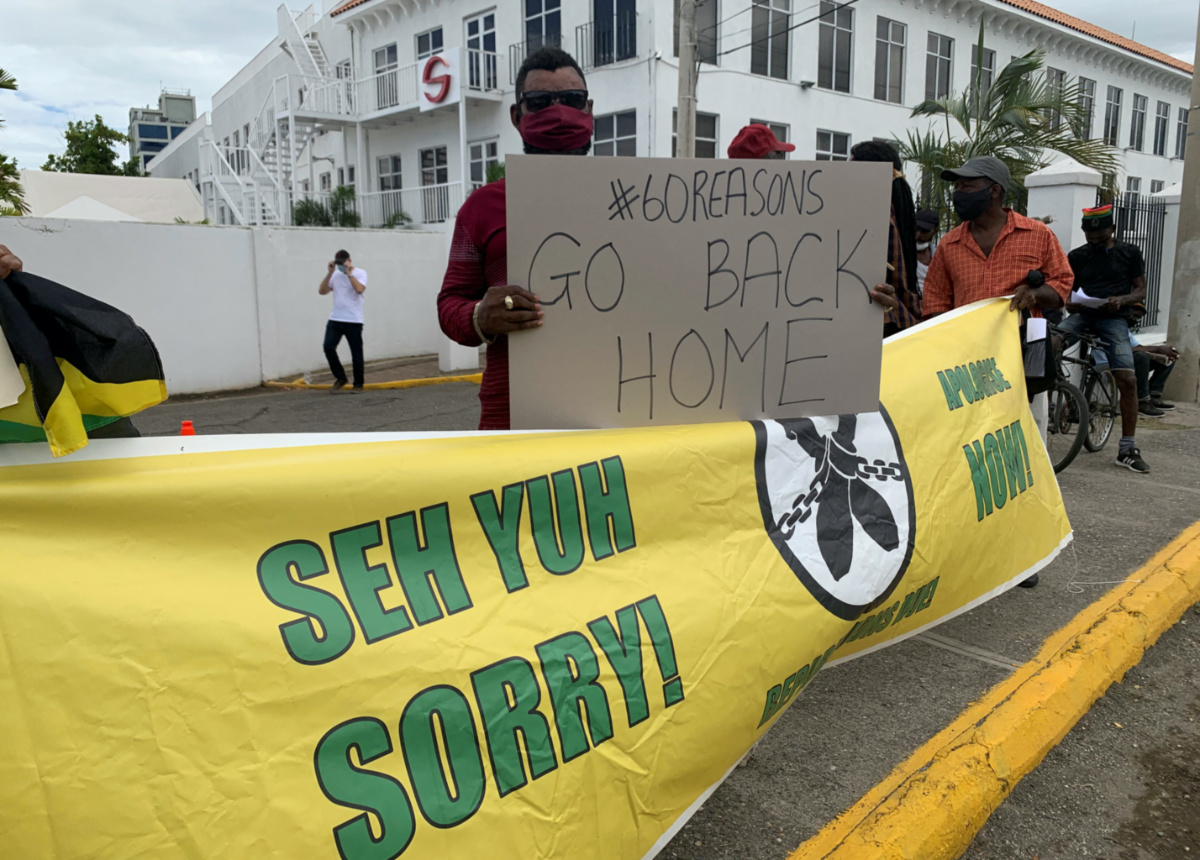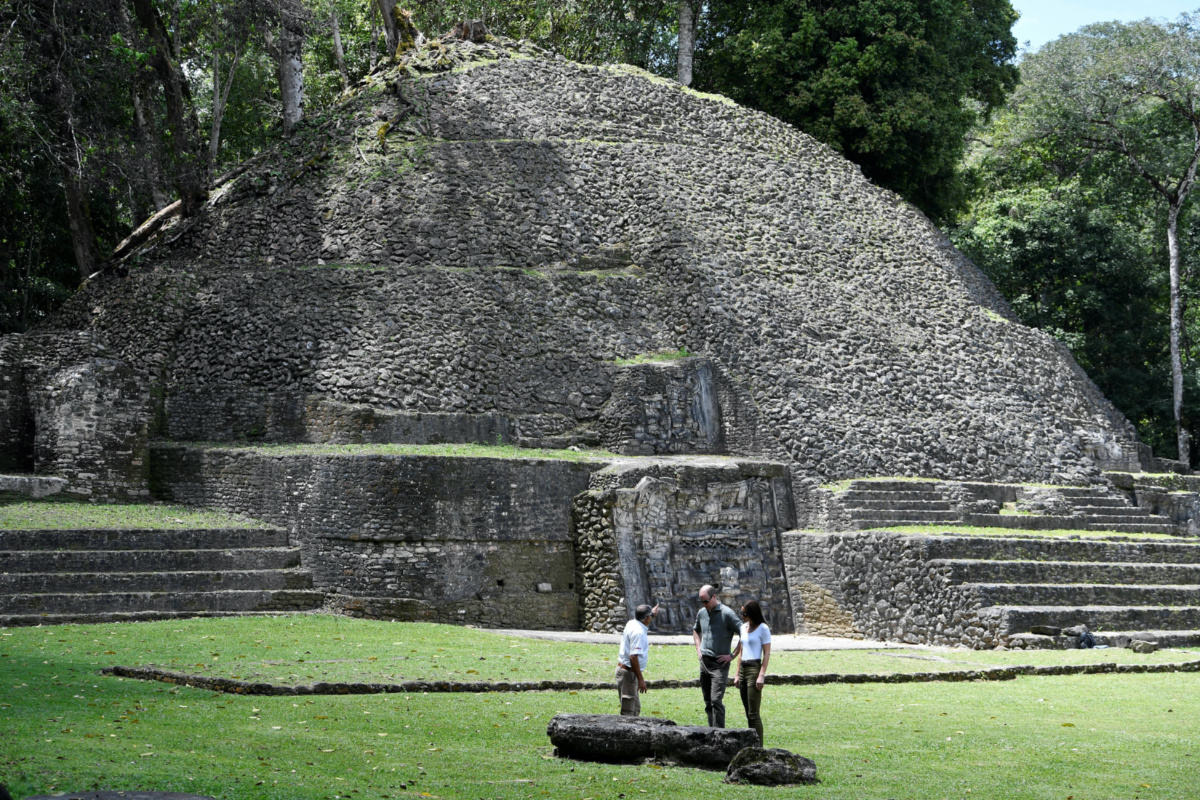Kingston, Jamaica
Reuters
Britain’s Prince William and his wife Kate arrived in Jamaica on Tuesday as part of a week-long Caribbean tour, hours after activists protested to demand reparations for slavery amid growing scrutiny of the British Empire’s colonial legacy.

Protesters gather outside an office of the British government to demand that the United Kingdom pay reparations for centuries of slavery, in advance of a visit by Prince William and Catherine, the Duke and Duchess of Cambridge, in Kingston, Jamaica, on 22nd March. The writing on the banner reads, “Say you [are] sorry.” PICTURE: Reuters/Kate Chappell.
The Duke and Duchess of Cambridge arrived in Belize on Saturday to start the tour that coincides with Queen Elizabeth’s 70th year on the throne, and will conclude it over the weekend with a visit to The Bahamas.
They were received by Jamaican foreign affairs minister Kamina Johnson-Smith and Defense Force Chief Antonette Wemyss Gorman at Kingston’s Norman Manley airport. They then left to meet Governor General Patrick Allen, who represents the British crown in Jamaica.
Earlier, dozens of people gathered outside the British High Commission in Kingston, singing traditional Rastafarian songs and holding banners with the phrase “seh yuh sorry” – a local patois phrase that urged Britain to apologize.
“There are historical wrongs and they need to be addressed,” said Dr. Rosalea Hamilton, an economist and activist who helped organise the rally where demonstrators read out 60 reasons for reparations. Jamaica celebrates 60 years of independence in August.
“Part of the conversation is how we begin a new dispensation and [discussion] of actions for the new generation,” said Hamilton, dressed in a T-shirt printed with the phrase “seh yuh sorry.”
The royal visits to Caribbean nations are seen as an effort to convince other former British colonies – including Belize and The Bahamas – to stay on as “realms” of the British monarchy amid a rising regional movement towards republicanism.
“What are they doing for Jamaica?”
Dance hall singer Beenie Man in an interview with Good Morning Britain questioned the royal visit and expressed scepticism about the Queen, saying “What are they doing for Jamaica? They’re not doing anything for us.”
One Jamaican judge, Hugh Small, this month burned his ceremonial British judicial wigs in a symbolic protest of the fact that a London-based tribunal called Privy Council continues to be Jamaica’s highest court of appeals.
William and Kate are scheduled to participate in a “sports activity” and a “cultural activity” on Tuesday as part of the tour that wraps up on Thursday, according to a preliminary agenda seen by Reuters.
The couple had to change their itinerary in Belize following a protest by a few dozen Indigenous villagers upset that the couple’s helicopter was given permission to land on a soccer field without prior consultation.

Prince William and Catherine, Duchess of Cambridge, view the ancient Mayan archaeological site and temple at Caracol with archaeologist Doctor Allan Moore on the third day of their tour of the Caribbean, at Chiquibul Forest, Belize, on 21st March. PICTURE: Reuters/Toby Melville.
Marlene Malahoo Forte, who was Jamaica’s attorney general until January, in December told the local newspaper Jamaica Observer that she had received instructions from Prime Minister Andrew Holness to reform the constitution to become a republic.
That process would require a referendum, per Jamaica’s constitution, making it more complicated than in smaller Barbados – which was able to make the change via an act of parliament.
The government last year announced plans to ask Britain for compensation for forcibly transporting an estimated 600,000 Africans to work on sugar cane and banana plantations that created fortunes for British slave holders.
Jamaica lawmaker Mike Henry has proposed reparations package of £7.6 billion.
He has said the figure is derived from a 20 million pound payment that Britain’s government made in 1837 to compensate slave owners in British colonies for the emancipation of enslaved people following the 1833 abolition of slavery.






